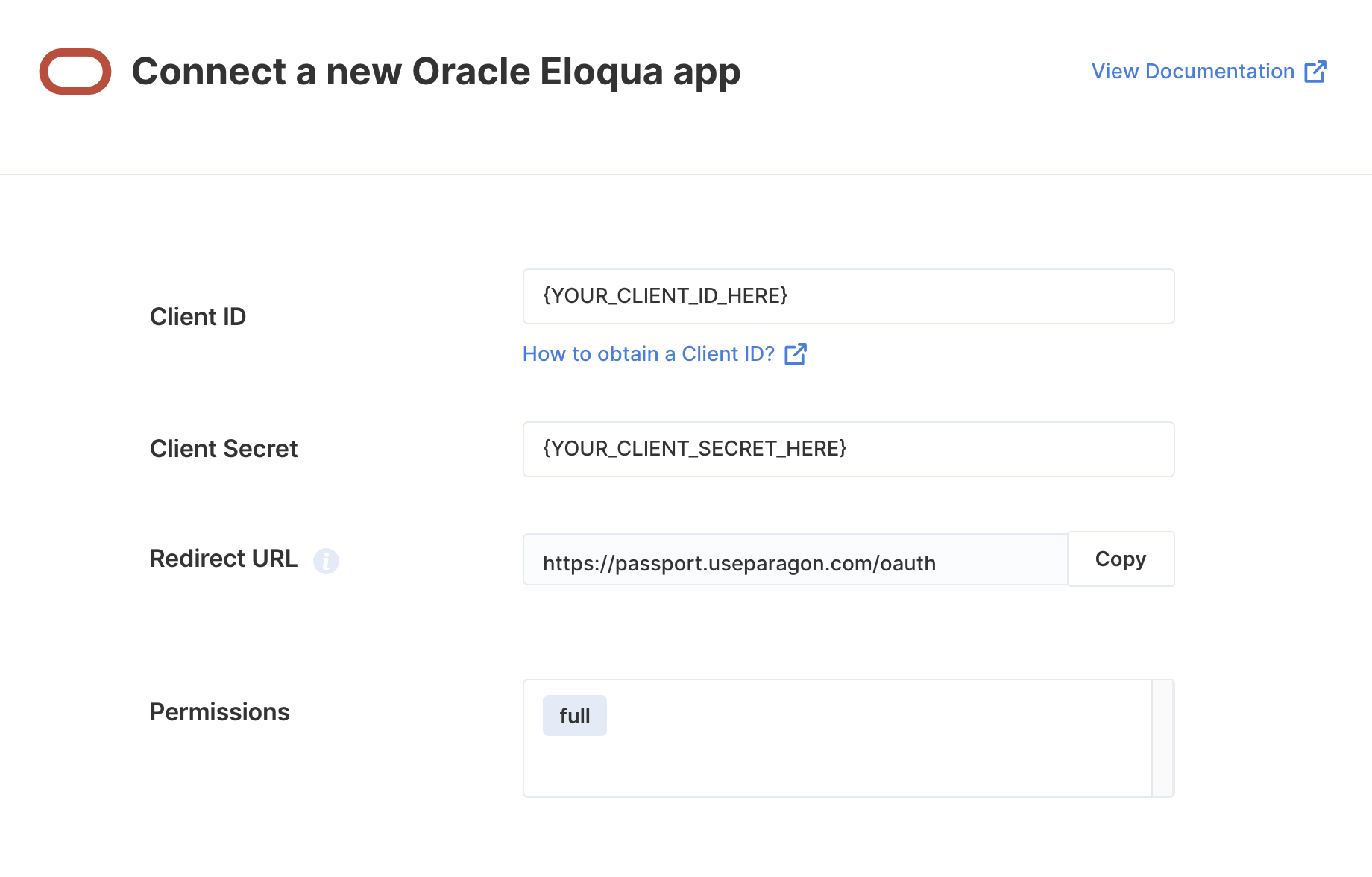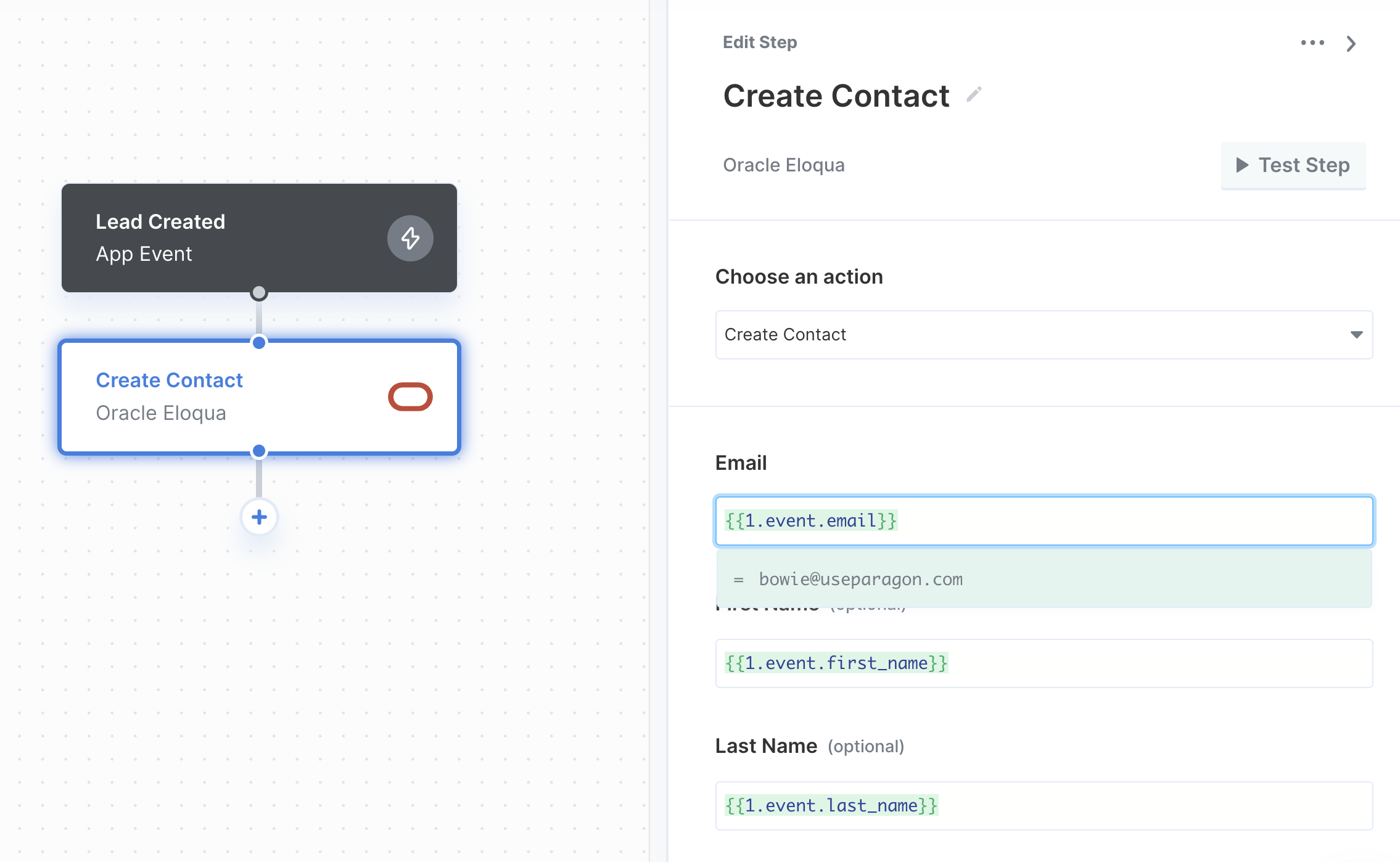Setup Guide
You can find your Oracle Eloqua app credentials by visiting your Oracle Eloqua App dashboard. Note: You’ll need to create a new Oracle Eloqua app if you don’t already have one. You’ll need the following information to set up your Oracle Eloqua App with Paragon Connect:- Client ID
- Client Secret
- Scopes Requested
Add your Oracle Eloqua app to Paragon
Under Integrations > Connected Integrations > Oracle Eloqua > App Configuration > Configure, fill out your credentials from your developer app in their respective sections:- Client ID: Found under Client ID on your Oracle Eloqua App page.
- Client Secret: Found under Client Secret on your Oracle Eloqua App page.
- Permissions: Select the scopes you’ve requested for your application. For a list of recommended scopes, please view this integration within your Paragon dashboard. View dashboard.

Connecting to Oracle Eloqua
Once your users have connected their Oracle Eloqua account, you can use the Paragon SDK to access the Oracle Eloqua API on behalf of connected users. See the Oracle Eloqua REST API documentation for their full API reference. Any Oracle Eloqua API endpoints can be accessed with the Paragon SDK as shown in this example.Building Oracle Eloqua workflows
Once your Oracle Eloqua account is connected, you can add steps to perform the following actions:- Create Campaign
- Update Campaign
- Activate Campaign
- Search Campaigns
- Get Campaign by ID
- Create Email
- Update Email
- Search Emails
- Send Email Deployment
- Create Contact
- Update Contact
- Search Contacts
{{ to invoke the variable menu.
